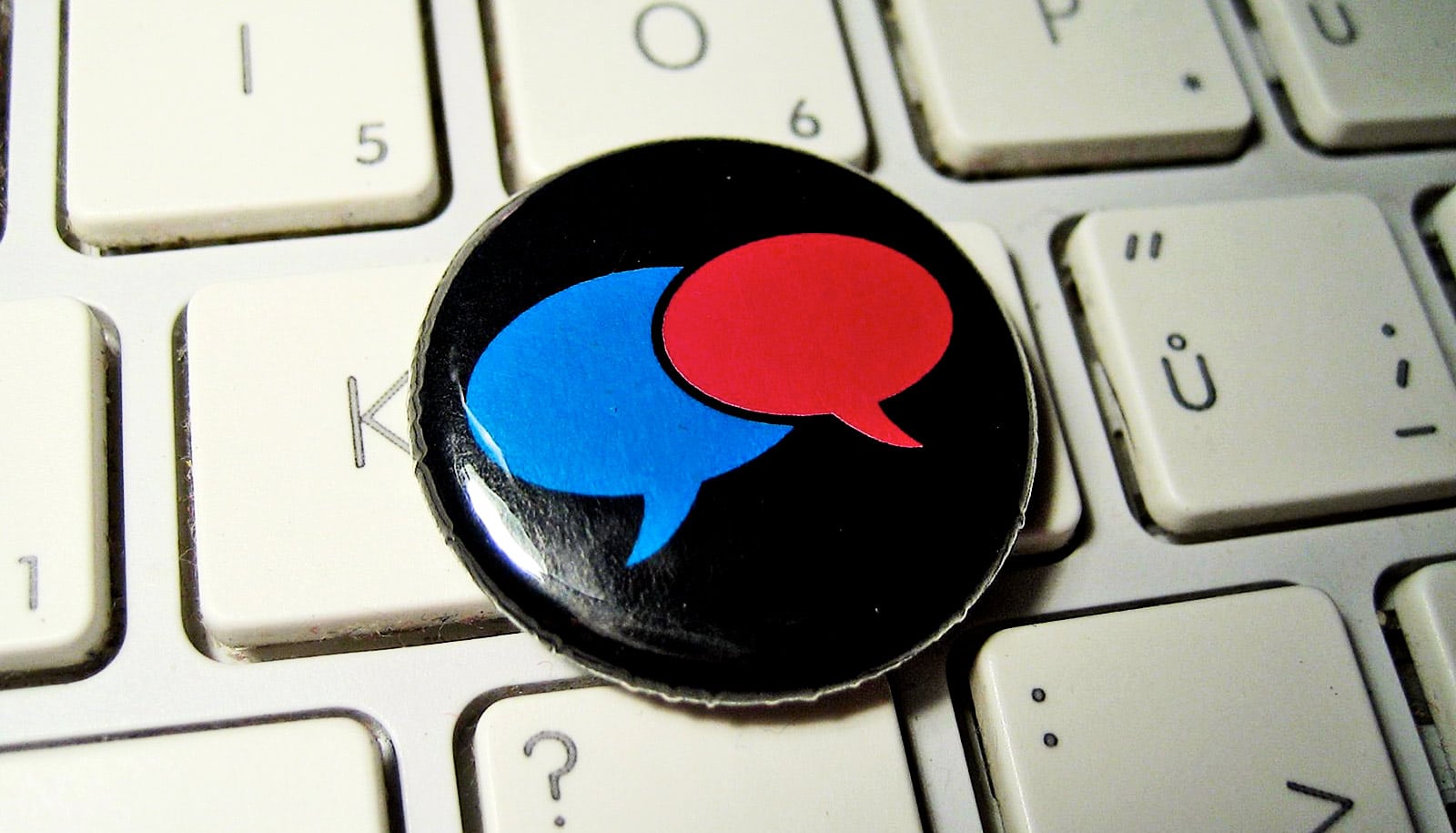The language patterns a person uses in describing their feelings can reveal their true sentiments about other groups of people, researchers report.
“There are times when people might lie about how they feel toward others for impression management concerns,” David Markowitz, an assistant professor in the University of Oregon’s School of Journalism and Communication, says of the study.
Markowitz’s research has included the study of deception and language, and the study of dehumanization and language. His new paper attempts to bridge those two areas of study.
“We know from the deception literature there are language patterns that reveal an honest person from a deceptive person,” he says. “And we know from dehumanization literature there are patterns in language that reveal someone who views outgroups as less than human compared to more human.”
One notable example cited in the paper is President Donald Trump’s 2019 State of the Union address, when he says he supported immigration to the United States and wanted immigrants to “arrive in the largest numbers ever.” That conflicted with earlier statements in less public forums in which Trump referred to immigrants as “animals” who “infest” countries, language commonly associated with dehumanization.
Markowitz recruited 1,169 subjects for his study through the online research platform CloudResearch. They were told that people can vary in how humanlike they seem and then were asked to rate, on a scale of 0 to 100, the evolved nature of eight groups: Arabs, Muslims, immigrants, Americans, Democrats, Republicans, African-Americans, and Asians.
If a participant rated a particular group as one of the most or least evolved groups, they were asked to write their thoughts, feelings, and opinions about the group. But participants also were instructed to either be honest in their opinions of outgroups, or to lie about their opinions of the group.
Earlier studies, including a meta-analysis from 2015, suggests that language patterns can distinguish between lies and truths.
“The effects are relatively small, but strong enough to be reliable,” Markowitz says.
The words written by participants were then run through an automated text analysis program called Linguistic Inquiry and Word Count, which contains dictionaries of categories related to social, psychological, and part of speech dimensions. The program has been shown to be a key tool in evaluating the dynamics of deception, as well as dehumanization, from language patterns, Markowitz says.
“It’s a gold-standard way to evaluate language patterns from a social science perspective,” he says. In effect, the program turns text into data, he says.
Consistent with earlier work, the study found that deceptive texts used fewer self-references and more negative emotion terms than truthful texts, and dehumanizers used more than negative emotions than humanizers.
Where the study breaks new ground, he says, is by investigating how these psychological constructs interact, and how they are reflected in the language people use as they attempt to manage impressions and maintain a positive self-image.
“What this research suggests is that language actually matters here and reveals psychological aspects of communicators who hold a different internal belief than their outward portrayal,” he says.
“The implication is, we can do a pretty good job of revealing (internal beliefs) in language, and this is one of the first studies of its kind to suggest specific word patterns reveal these psychological processes.”
The work appears in the Journal of Language and Social Psychology.
Source: Tim Christi for University of Oregon


